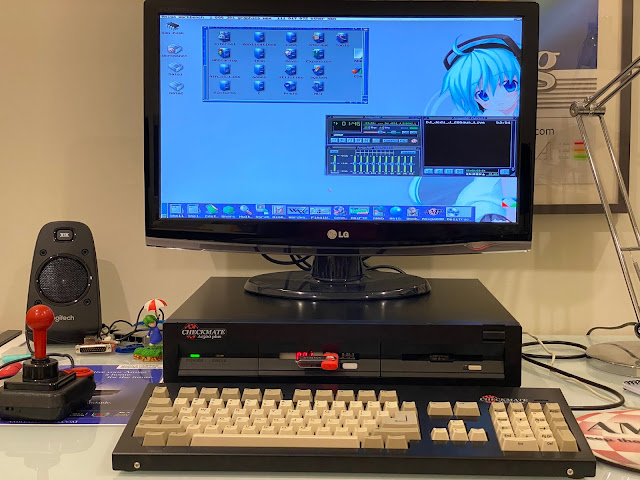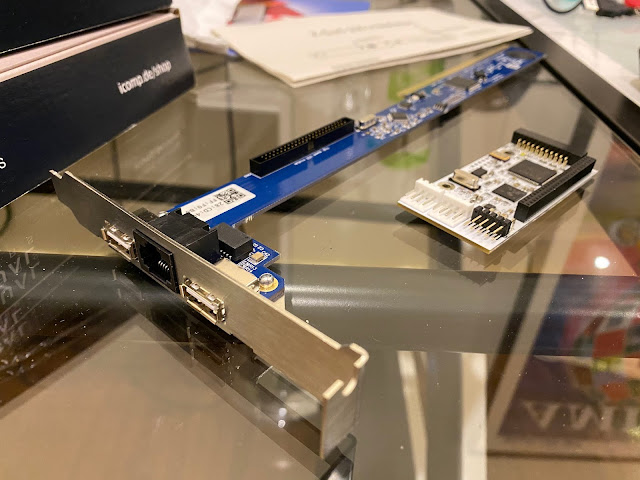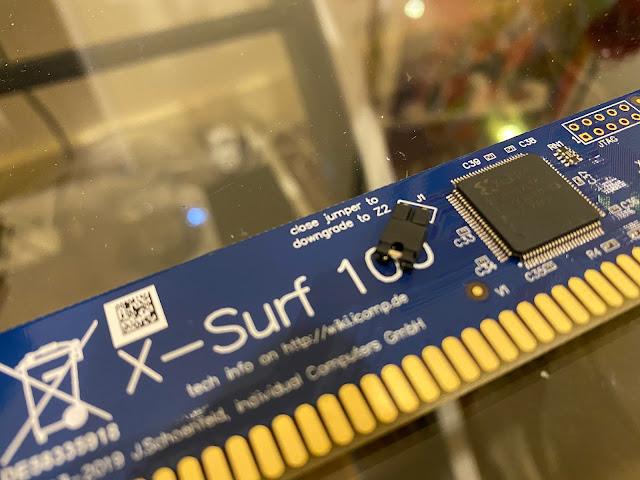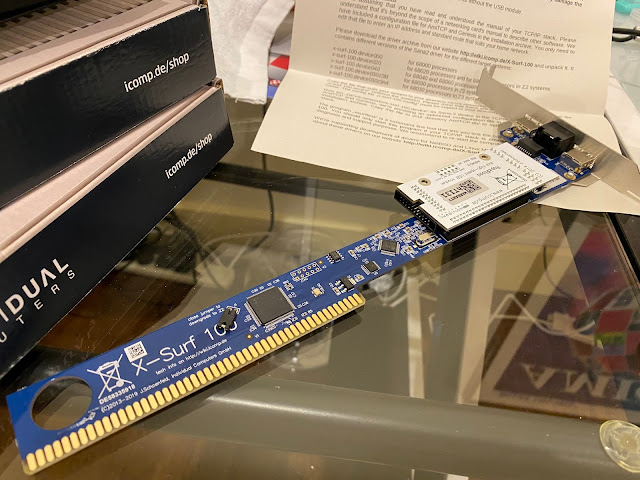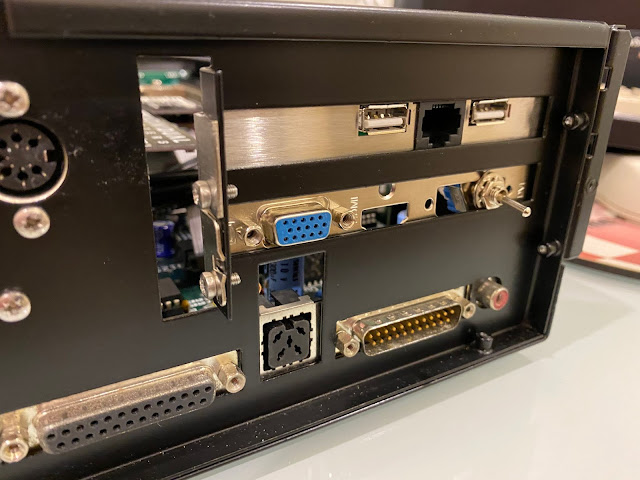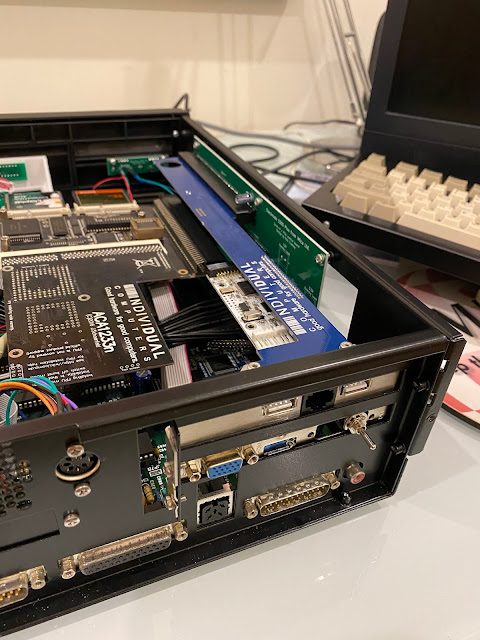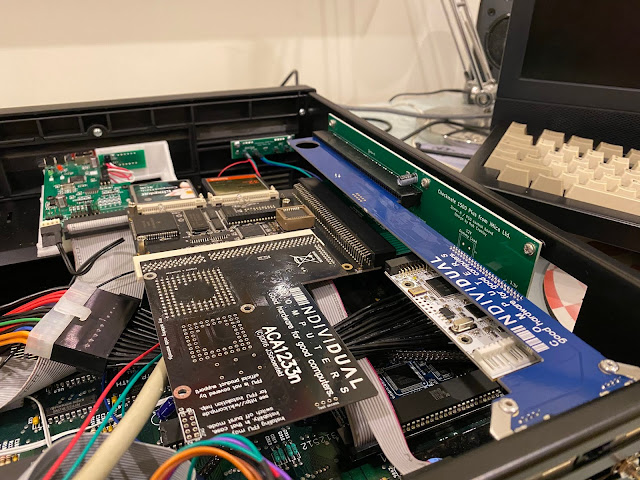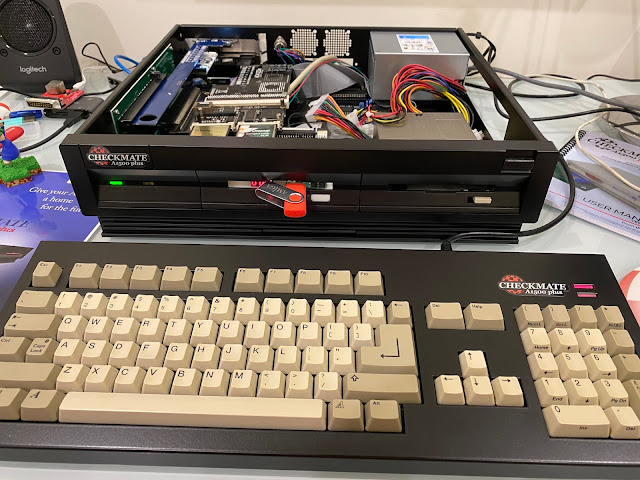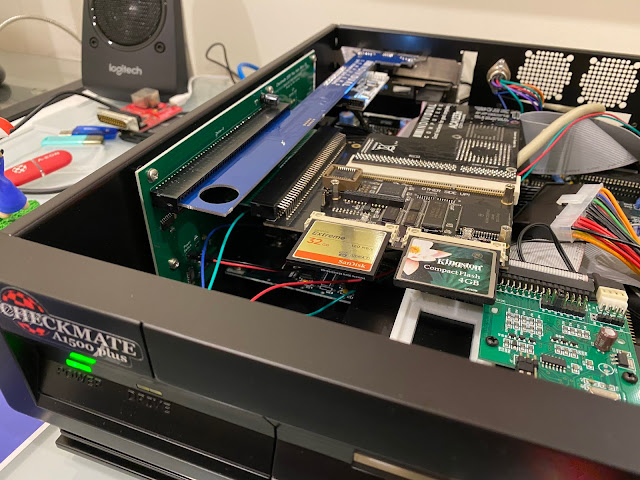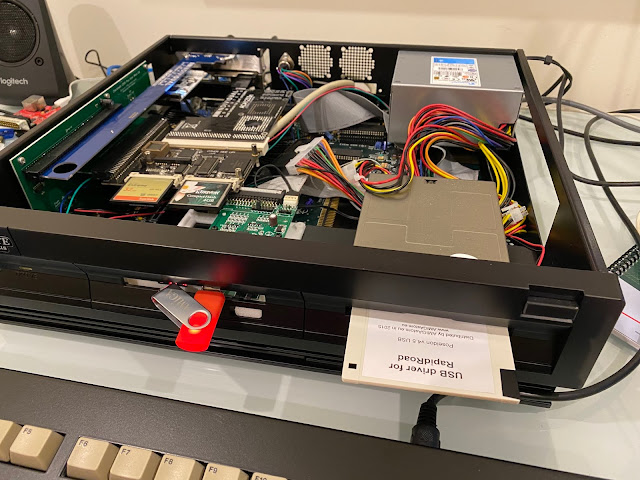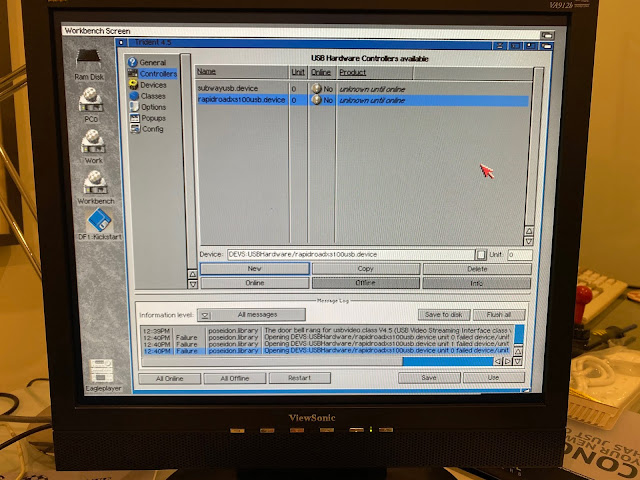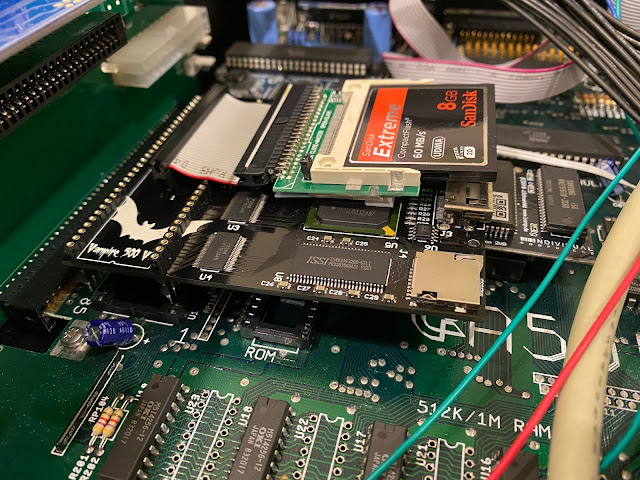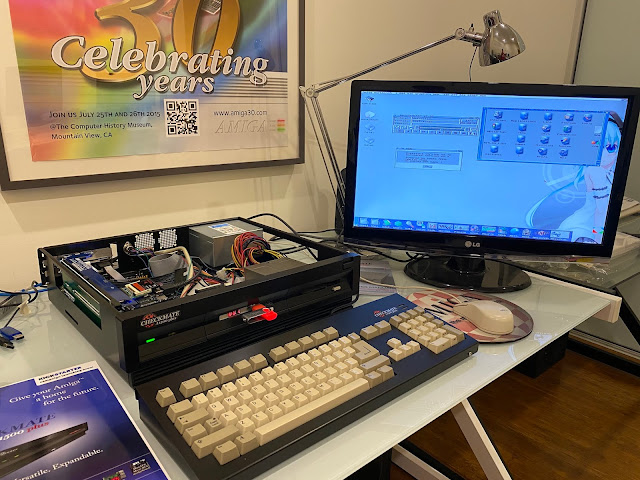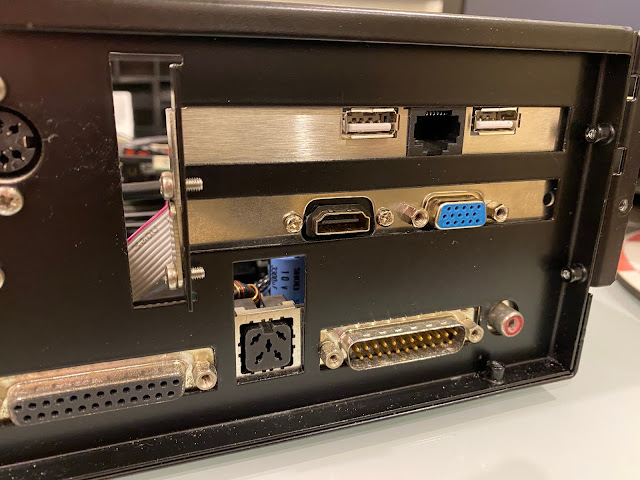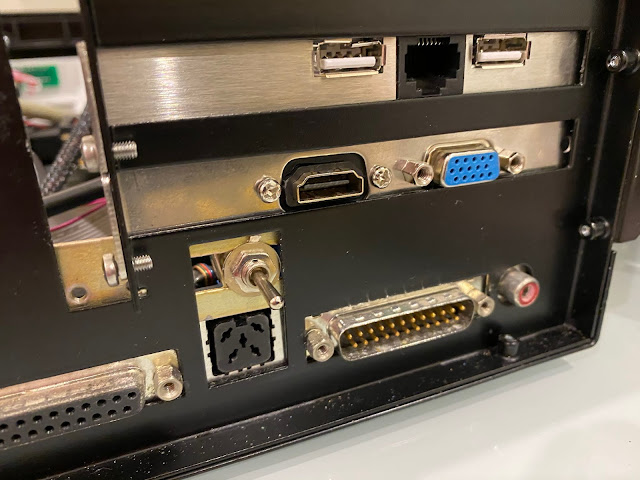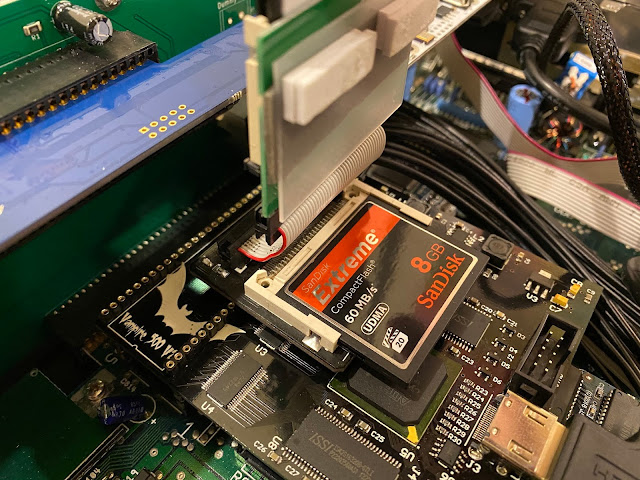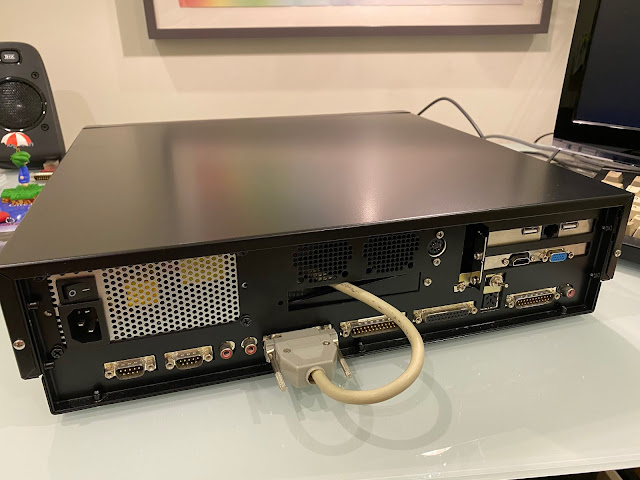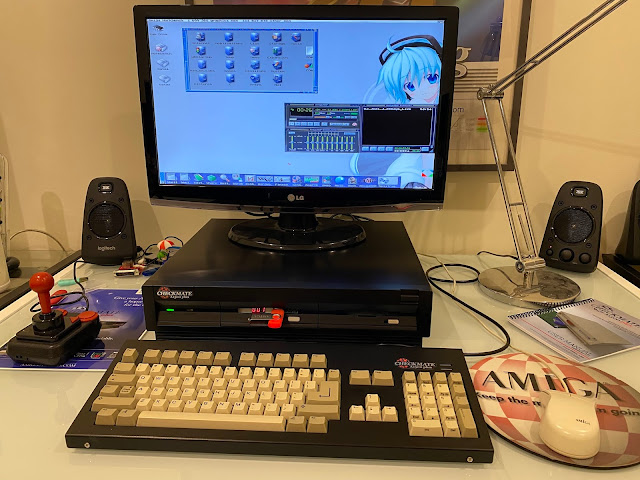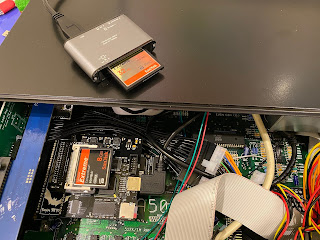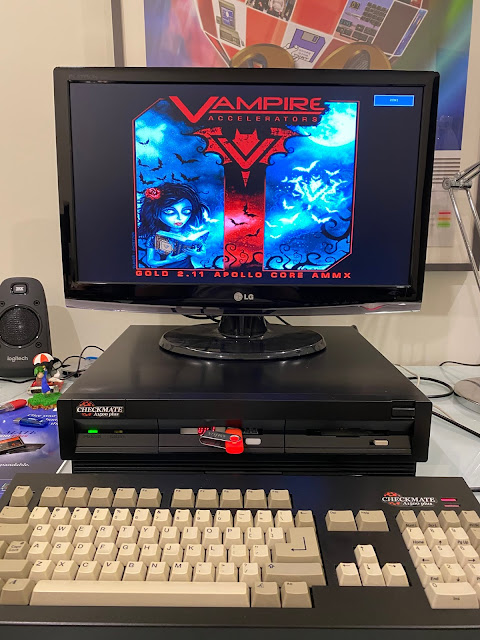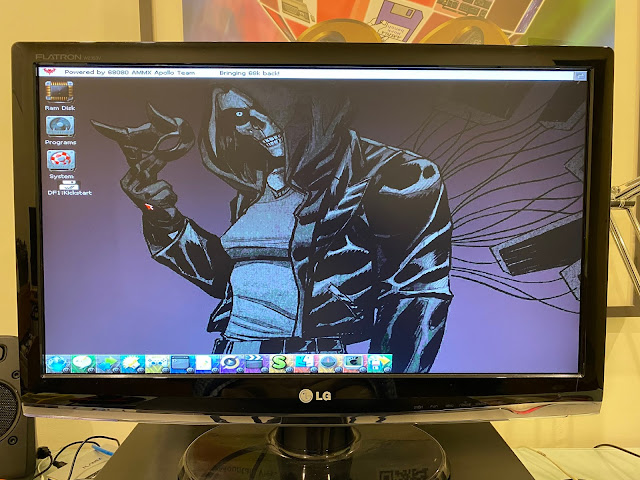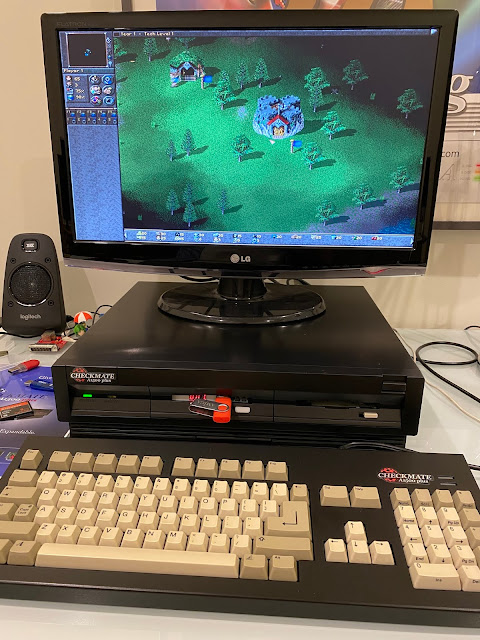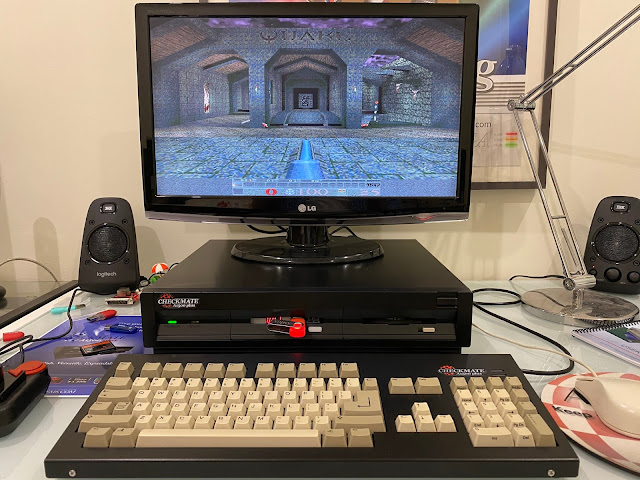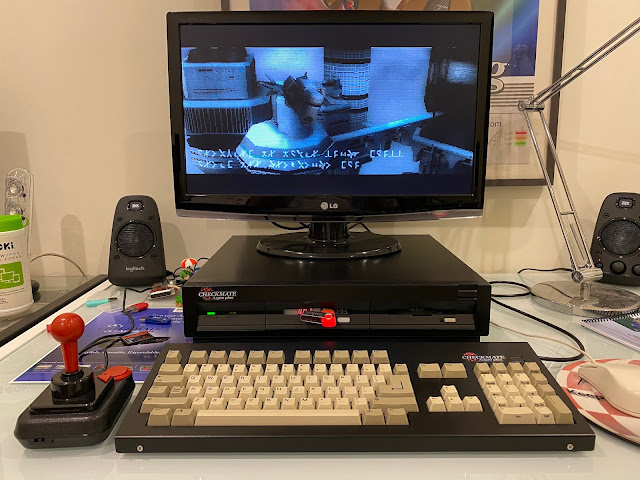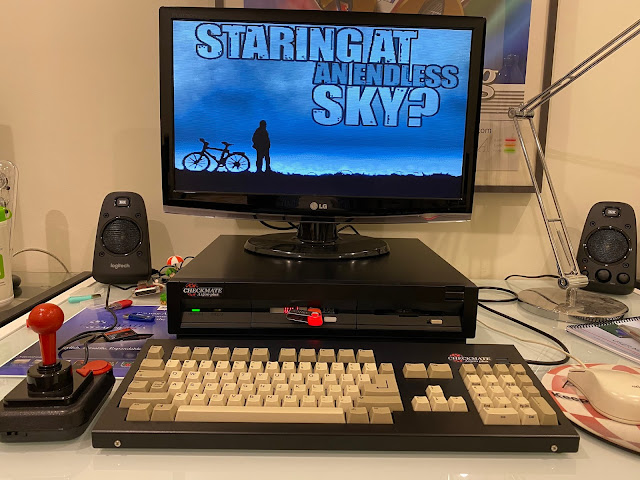Checkmate A1500 Plus with Vampire 500V2
Following on from my build of the Amiga 500 into the Checkmate 1500 Plus case, I have now added a new RapidRoad/X-Surf 100 card, and also found a fix (and some needed bits and bobs) to allow me to install the Vampire 500v2 too!
At the completion of the work in the last blog post, I was waiting for some bits and pieces to allow me to finish the Checkmate A1500 Plus system the way I wanted to.
First up is the arrival of a new Rapid Road USB and X-Surf 100 boards, ordered directly from Individual Computers. I didn't have another set for this new (old?) system, so I had to buy new ones.
Because I plan to install it into a Zorro 2 slot on the Checkmate A1500 expansion module, I need to close the jumper on the X-Surf 100 to enable Zorro2 (Z2) mode of operation:
With that done, I then mounted the Rapid Road USB onto the X-Surf 100 using the port provided on the board. This then activates the USB ports on the back of the X-Surf 100 card.
I removed the Subway USB from the ACA500 as I will no longer need it (the RapidRoad is faster anyway), and removed the usb brackets from the back of the case that were used by the Subway.
I then installed the X-surf 100 card into the case. I needed to bend the end of the bracket slightly to get it to slide in smoothly.
View of the installed card from the top:
Being such a skinny card, the X-Surf is well clear of the ACA500.
I fired it up and it boots up, which is a good start.
Closer view from the front:
I needed to install the Rapid Road USB drivers so I pulled out my driver disk. I note that Individual Computers no longer includes the floppy disk and expects you to download it yourself. That is a shame, as the floppy disk is very useful.
I installed latest Poseidon 4.5 from the floppy disk, which also installed the RapidRoad drivers. I then ran the Trident prefs program and added the device in, but unfortunately it couldn't find it...I tried the Unit setting as 0 and 1 but no go.
I know this combination should work (well, it works with Vampire 500 setups from what I have read).
Very timely then that I got the bits I needed to finally install it!
I pulled out the Vampire 500V2. Last time I used it was in the Amiga 2000 back in December 2016. I did a lot of detailed setup information in my blog post at that time. Wow time has passed so fast!
http://amigax1000.blogspot.com/2016/12/vampire-500-v2-part-1.html
http://amigax1000.blogspot.com/2016/12/vampire-500-v2-part-2.html
The 8GB CF card is already fully setup and no further build is necessary to use the Vampire 500 with the Amiga 500. That said, I plan to do more as there have been many firmware updates since then...
The issue has been that the Vampire 500V2 board didn't sit high enough to clear the installed ACE2 2MB chip memory expansion board nearby in the Amiga 500.
Here is the solution, a pile of 32pin risers...
Carefully (and I do emphasize being very careful here as many people break the CPU pins on their Vampire doing this), I added the risers onto the bottom of the Vampire card, to raise the height.
Not sure how many I will need...
I removed the ACA500, attached ACA1233n accelerator and the Checkmate expansion extender board as they are not usable with the Vampire 500V2 installed. I did leave the new X-Surf 100 and RapidRoad USB installed though.
Next, I pulled out the Kickstart 3.1.4 rom - you can see how close the ACE2 expansion is, and why the Vampire needs to be raised to clear it:
I then removed the 68000 CPU next to it.
With both chips safely removed with chip extractor, I started testing the fit to work out how many risers were needed:
Two definitely not enough...
I found three was scraping the ACE2 chips, so I used 4 risers on each side:
Now it clears the ACE2 expansion with small room to spare:
I pushed the Vampire very gently into it's final position:
Some more views:
I am happy to finally be able to use the Vampire 500V2 on my Checkmate A1500 Plus system:
Next I needed to dig out an HDMI screen, which also have a SVGA port. I stole the screen I was using with the CDTV for now, as I don't have any more spare ones with the needed ports.
I connected the Indivision ECS SVGA output and the Vampire HDMI output to the same monitor, using the input select to switch between them - this is to avoid having two screens.
I then I fired up the system, and it worked first time, using the HDMI output:
Workbench appeared using the HDMI RTG screen modes (set to 1024x768x32bit colour for now), so things appear to be working ok with the Vampire installed:
The Vampire 500V2 has 128MB Fast memory installed, so I still keep the same memory on the Amiga 500 system as I did before with the ACA500 plus ACA1233n combination. The ACE2 expansion provides 2MB of chip memory separately too.
Now, I need to neaten things up. I purchased two HDMI converter cables from Ebay, one that goes from a bracket mountable female HDMI connector to male HDMI plug:
The second cable uses a right angled HDMI plug to female HDMI connector:
I then connected them together:
I then connected it up to the Vampire 500V2 HDMI port, and tested to make sure the cables worked fine.
They did, so now I need to mount them into a suitable bracket. I read from others that the best thing to use appears to a dual serial port bracket.
Luckily for me, I have an old IOBlix Serial Zorro card from my A2000 floating around not being used - it has the required two serial ports in the bracket:
Here is the bracket after removing it from the card.
I then mounted the Indivision ECS SVGA port and the new HDMI bracket mountable connector into the two ports. It was a very tight squeeze but they fitted!
Here is the bracket, now installed in the Checkmate A1500 Plus case:
I still have an issue though, as I don't have somewhere for the DF0 Selector switch to be mounted now!
I mentioned in my earlier blog post that the hole above the old A500 power supply connector seems a logical place, but it needs a metal bracket mounted behind to hold the switch to.
I unscrewed a SCSI port mounting bracket from an old SCSI port module (from a SCSI card I am not using):
I lined up the bracket with the hole, ensuring a screw hole appears in the space between the expansion bracket bays and the rest of the case. I then mounted the switch through the former SCSI port hole. It is not perfect fit, I know. But it works.
I then added a screw with a metal frame to hold the bracket to the rear of the case:
It now stays in place and is easy enough to access as needed, to switch the Gotek as DF0, or the real floppy drive as DF0, both mounted internally in the case.
Here is the view from inside the case showing the DF0 selector switch mounting:
I took my Vampire IDE to CF adapter I bought recently to install in place of the previous CF converter I was using. The reason is because it doesn't need a ribbon cable, so it mounted nice and flush to the Vampire's onboard IDE connector, and allows ventilation a bit better above the board itself:
Unfortunately it was not visible on the Workbench, and I couldn't see the drive in HDToolbox.
I decided to remove the extra IDE drive for now.
I closed up the case, with plenty of changes now to the expansion brackets from the initial build, now that the Vampire 500V2, X-Surf 100 and Rapid Road are installed:
Closer look:
With the case on, it makes the system look great again, now running the Vampire 500V2:
I had some cleanup work to do on the AmigaOS3.9 hard disk, as it was being used with the Amiga 2000 before, which had a Oktagon SCSI card, SCSI CDROM, and Prisma Megamix card installed.
This system doesn't have those of course, so I had to remove the CD0 dosdriver, and removed the hardware references in AmigaAmp etc.
The Vampire 500V2 definitely doesn't need the Prisma to playback Mp3 audio flawlessly anyway!
The system does now have a working X-Surf 100 and Rapid Road USB! I am pleased to report after removing the ACA500 and installing the Vampire 500V2, the RapidRoad is detected in the Checkmate Expansion module Zorro port and now works well.
As mentioned, the firmware version on my Vampire 500V2 is quite old, from back in 2016. So I wanted to upgrade it. As this CF is all setup to work with the old version, I decided to keep the CF card as a backup, and create a new CF card to work with. That way if I need to revert the firmware version it can be done easily from this CF card.
I decided to use a 32GB CF card, as above. I downloaded CoffinOS, which is a optimised build of AmigaOS 3.9 for use with the Vampire 500/600 cards.
It is a bit shady that they include AmigaOS 3.9 with the image, which is why I am not linking to it. But a quick Google will locate it. You need a Torrent client to download the 16GB compressed RAR file.
In my case I do own a paid license for AmigaOS 3.9 so it is not an issue for me to use it as distributed.
I extracted the archive on my Windows 10 PC to the full 32GB image file, and then used WinDiskImage to write it to the 32GB CF card, using a USB to CF reader.
With that done, I then installed the CF card into the Vampire 500V2:
On initial boot not much happened. I saw the Vampire boot screen and that was it. It didn't boot into Workbench.
I know there is a version detection section in the startup-sequence that (coffin-start) that checks the version of the Vampire card installed and prompts to install the latest (at the time of writing) v2.11 Gold firmware. I held down both mouse buttons on boot and selected to Boot no startup. I could then verify the lines in the coffin-start file as below:
The key bit is the C:GOLD211_V500 program, which is the bit that runs to update the core. So I ran it from the Shell and it then detected the Vampire 500V2 and asked to flash the Vampire with the latest 2.11 version:
The flashing process ran and completed successfully:
I then powered down and powered on again to use the new firmware v2.11 Gold version with Vampire 500 V2! It worked, and the updated splash boot screen shows the new version:
The setup process kicks off and asks me to setup the locale, language, mouse, and network settings:
I am in Australia of course, so I quickly change the default. After all, we don't all live in the US!
The workbench screen then appears, initially in a safe HDMI RTG 800x600 screenmode:
Personal thing, but I hate the CoffinOS default picture. I don't know about you, but each to their own!
The prebuilt CoffinOS is impressive, with full icon replacement and loads of software, application, games and demos all installed on the CF card, ready to run.
So I jumped right in, starting with Foundation Gold RTG - a game I could never run on the Amiga 500 before the Vampire:
I am also impressed with the speed of the Vampire, being able to handle MP3 playback without extra decoding hardware, and providing a beautiful RTG display on modern TFT screens:
Further proof of the speed of the Vampire is being able to run AmiQuake RTG full screen, on my Amiga 500!
You can also run Quake2 on the Amiga 500 with the Vampire, albeit at a low resolution compared to Quake. But still very impressive that an Amiga 500 can run Quake 2 :-)
I was surprised to see that ADescent runs very well on the Vampirised Amiga 500 too:
Really amazing to see an Amiga 500 do this!
Turning to the WHDLoad games installed on the CoffinOS CF card, I decided to have a go at Rainbow Islands:
Being a demoscene person, I had to try the demos next. I was so amazed to see demos I could only run on my Amiga 4000T with 060, run flawlessly on my Amiga 500 with Vampire 500V2:
Elude's We Come in Peace demo runs better on the Amiga 500 than it does on my Amiga 4000T!
Last but not least, Ghostown's Metropolice demo, running faster on the A500 with Vampire 500V2 than it does on my Amiga 4000T with 060:
I have a lot more I still want to do with this setup.
However, I want to display this Checkmate A1500 Plus system at the Adelaide Retro Computing Group meeting on this Friday, so I will leave it in this working state for now!
